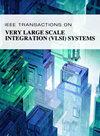用于可靠人工智能加速器的高效面积收缩阵列冗余架构
IF 2.8
2区 工程技术
Q2 COMPUTER SCIENCE, HARDWARE & ARCHITECTURE
IEEE Transactions on Very Large Scale Integration (VLSI) Systems
Pub Date : 2024-07-08
DOI:10.1109/TVLSI.2024.3421563
引用次数: 0
摘要
在人工智能(AI)飞速发展的推动下,人们对数据密集型分析的需求日益增长,因此各种人工智能加速器应运而生。然而,由于基于人工智能的解决方案正被应用于需要高精度和高可靠性的应用中,确保这些解决方案的可靠性已成为一个关键问题。在本简介中,我们提出了一种用于可靠人工智能加速器的面积效率高的收缩阵列冗余架构。在所提出的架构中,分配给故障乘积(MAC)单元的计算将通过专用路由绕过。随后,相同的计算在可移位冗余 MAC 或可选择冗余 MAC 中执行。这样就能确保在不降低性能的情况下正确完成计算。此外,计算的重新分配可通过简单的调度算法进行有效管理。因此,拟议架构通过冗余 MAC 和有效的计算重新分配实现了高修复率。尽管具有这些功能,但所提出的架构只产生了很小的面积开销。本文章由计算机程序翻译,如有差异,请以英文原文为准。
An Area-Efficient Systolic Array Redundancy Architecture for Reliable AI Accelerator
The increasing demand for data-intensive analytics, driven by the rapid advances in artificial intelligence (AI), has led to the proposal of various AI accelerators. However, as AI-based solutions are being applied to applications that require high accuracy and reliability, ensuring the dependability of these solutions has become a critical issue. In this brief, we present an area-efficient systolic array redundancy architecture for reliable AI accelerator. In the proposed architecture, computations assigned to faulty multiply-accumulate (MAC) units are bypassed using dedicated routes. Subsequently, the same computations are executed in shiftable redundant MACs or selectable redundant MACs. This ensures the correct completion of calculations all without performance reduction. Moreover, the reassignment of computations can be efficiently managed through a simple scheduling algorithm. As a result, the proposed architecture achieves a high repair rate through the redundant MACs and effective computation reassignment. Despite these capabilities, the proposed architecture incurs only a small area overhead.
求助全文
通过发布文献求助,成功后即可免费获取论文全文。
去求助
来源期刊
CiteScore
6.40
自引率
7.10%
发文量
187
审稿时长
3.6 months
期刊介绍:
The IEEE Transactions on VLSI Systems is published as a monthly journal under the co-sponsorship of the IEEE Circuits and Systems Society, the IEEE Computer Society, and the IEEE Solid-State Circuits Society.
Design and realization of microelectronic systems using VLSI/ULSI technologies require close collaboration among scientists and engineers in the fields of systems architecture, logic and circuit design, chips and wafer fabrication, packaging, testing and systems applications. Generation of specifications, design and verification must be performed at all abstraction levels, including the system, register-transfer, logic, circuit, transistor and process levels.
To address this critical area through a common forum, the IEEE Transactions on VLSI Systems have been founded. The editorial board, consisting of international experts, invites original papers which emphasize and merit the novel systems integration aspects of microelectronic systems including interactions among systems design and partitioning, logic and memory design, digital and analog circuit design, layout synthesis, CAD tools, chips and wafer fabrication, testing and packaging, and systems level qualification. Thus, the coverage of these Transactions will focus on VLSI/ULSI microelectronic systems integration.

 求助内容:
求助内容: 应助结果提醒方式:
应助结果提醒方式:


